Everyone has their own idea of what “home” looks like. For some people, it’s a sprawling ranch with room to stretch out. Maybe you even dream of herding sheep. For other people, it’s a quiet single-family home that is perfect. A suitable backyard for playing fetch is all you need. And others crave the hustle and bustle of the city. You want to stand on a balcony and listen to the rush of traffic while you sip your morning coffee. An apartment meets your needs perfectly. But can you share that dream with a dog? Most apartments don’t come with backyards or even patches of grass. Will ANY canine adapt to the sights, sounds, and size constraints of the urban environment? You bet! With some research, you’ll find dog breeds for apartments of every size.
City Life
When people move to urban areas, they fret that they’re losing out on dog ownership. Plenty of questions start running through your head:
- Depending on your city of choice, apartments can run to the small side. How to squeeze your favorite pup between the fridge and the couch?
- Can you find a park nearby for that important daily walk?
- Will the company even allow canines into the building in the first place?
Luckily, with pet ownership on the rise across the country, more and more cities are paying attention. You’ll find dog-friendly areas popping up all over the place. “Dog-friendly” can include an abundance of dog parks in an area, apartment complexes that welcome dogs (even some that DON’T ban breeds!), and boutiques set up to cater to your pup’s every doggie spa need. Add in one of the best dog breeds for apartments, and you’ve got a pet lover’s paradise.
Dogs in Apartments
When most people think about dog breeds for apartments, they assume the pup needs to be small. The average city residence can’t compete with a house in the suburbs for room to stretch. And with space at a premium, the assumption goes that you’ll need a canine that’s as tiny and portable as the rest of the furniture.
However, this isn’t necessarily true. Dogs want your TIME, not your space. The amount of the day you devote to their love and care means more to them than creating a luxurious palace. If you haven’t lost your heart to a breed that demands constant exercise – such as a Border Collie – you can work with them in an urban space. Yes, that even means some of the giant breeds!
“As long as you’re exercising your dog both physically and mentally, your dog doesn’t care how big or small your apartment is – within reason.”
~Russell Hartstein, CEO and Founder of Fun Paw Care Puppy and Dog Training
However, there ARE several characteristics that the best dog breeds for apartments all have in common. When you start researching which canine companion might want to join you on that terrace each morning, these are the traits you want to look for. They’ll help you decide whether your favorite pup will work out in that choice downtown spot or not:
- Size
- Penchant for Barking
- Temperament
- Exercise Needs
Dog Size
Obviously, small pups make great dog breeds for apartments. They won’t crowd a potentially tiny spot; you can play INSIDE without a problem, and you can scoop them up to tackle the stairs or elevator. But you aren’t confined to the small breeds out there when you move to the city. And when you start to look at the other traits of most small breeds, it turns out they’re NOT the ideal dogs to keep in confined spaces – particularly when you have neighbors.
Medium dogs work equally well in apartments. You still won’t see them eat up much of the room, and – depending on their weight and your fitness level – you can pick them up when needed. You’ll also gain the advantage of having an adventure buddy when you decide to go hiking on the weekends. (Smaller pups can’t always keep up on trails)
Believe it or not, large dogs DO work in apartments. The deciding factor is their activity level – and your willingness to compromise. Obviously, you’ll have to haul a big old bag of dog food up to your apartment to keep your pup fed. And you WILL need to make those outdoor walks. But some of the bigger canines aren’t interested in doing more than snoozing the day away. So long as you’re willing to provide the proper bed, they’ll share whatever space you have.
Barking Habits
Dogs bark. That’s understood – at least by dog owners. Neighbors? They don’t always appreciate it. Unless you have an apartment that spans an entire floor, odds are you’ll have SOMEONE on at least one side of you. And even the best buildings allow some passage of sound. The best dogs for apartments keep that barking habit to a minimum.
You won’t find a dog that DOESN’T bark. Some people point to the Basenji, which lacks the capability to bark. However, Basenji’s HOWL and yodel. They’re also incredibly stubborn (people liken them to cats). Your neighbors won’t hear a bark, but they’ll often hear plenty of serenades – hard to say which they’d prefer.
When considering a dog to share your urban oasis, consider dogs known for the quieter habits. Your neighbors will appreciate it. Otherwise, you could expect nasty notes slid under your door. Or, worse, you could find yourself getting warnings from the building superintendent – if you aren’t asked to find residence elsewhere!
Temperament
Cities are PACKED with people, noise, and smells. Some dogs don’t mind all of the new stimulation. Others? That’s their rendition of a horror show. You CAN work with a trainer to help a dog gain socialization skills, but if you know a certain breed HATES strangers, why bring them into an environment that forces them to encounter strangers all the time?
Easy-going, calm demeanors are the hallmark of dog breeds for apartments. They don’t mind hopping on an elevator. You’ll see them pick up their feet and prance down the sidewalk. And honking horns or shouting people? Doesn’t phase them in the slightest. They LIKE people – even if they’d prefer to hang out in your company.
Exercise Demands
Every dog needs SOME form of exercise. If you allow a pup to lounge on the couch all day, they turn into a butterball, and you get a lecture from your vet. But some dogs do fine with a walk or two around the block, and others need to get out and RUN multiple times a day. Since you likely won’t find an apartment with significant backyard space, your dog’s energy needs are critical. And, odds are, you need to work. That means you can’t spend every moment taking your dog down to the park.
True, you MAY get away with tossing a ball around INSIDE the apartment. (Make sure you avoid any breakables) But fresh air’s important for canines, too. And if you don’t let your dog walk on pavement or gravel, you’ll need to increase how frequently you trim their nails. So look for dog breeds for apartments with exercise needs that work with YOUR lifestyle. Then both of you will stay happy.
Best Dog Breeds for Apartments
Surprisingly, you’ll find over FORTY dog breeds for apartments. And they’re NOT all on the small side. When you sort through all of those crucial characteristics, you can find dogs of every size. It comes down to what works with how you live. The size of the apartment? That’s secondary. If you and your pup love each other? You can make a closet work. Seriously. Take a walk around a city, and you’ll see every shape, size, and type of dog – happily prancing around the sidewalks and parks. The time invested in care is what matters.
Best Dog Breeds for Apartments: Low Exercise Needs
You have a demanding schedule. Maybe you can arrange a dog walker to swing by in the middle of the day, but maybe not. And it’s possible that, at the end of the day, YOU’RE beat. Two walks a day are all you feel up to during the workweek. You want one of the dog breeds for apartments that don’t feel the need to move from the couch. And they exist! These pups enjoy lounging in the sun and snoozing the day away. They still need exercise to stay fit and healthy, but they’re not interested in lengthy play sessions or running around the dog park. They’d much rather doze in your lap while you watch TV.
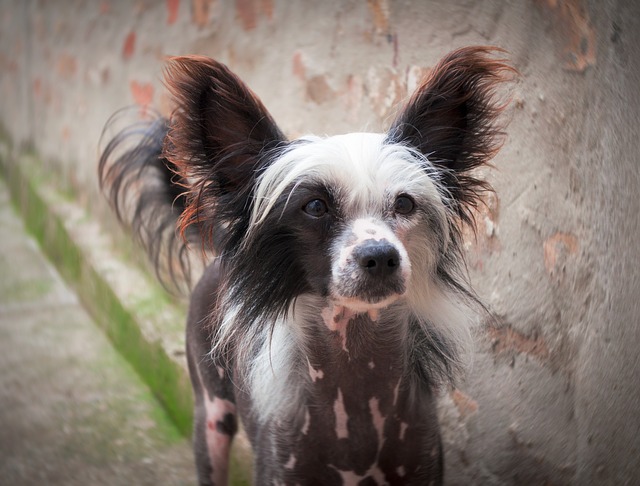
Chinese Crested 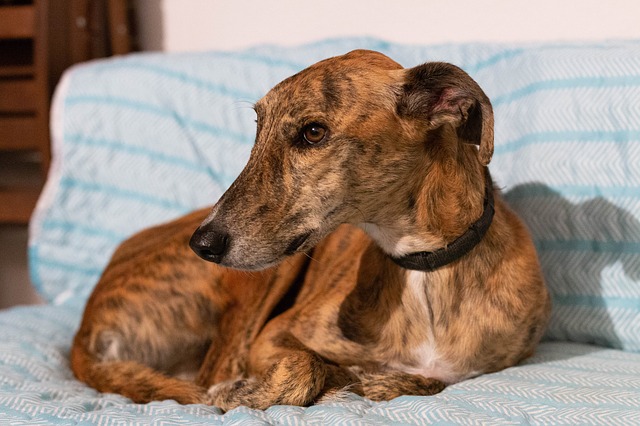
Greyhound 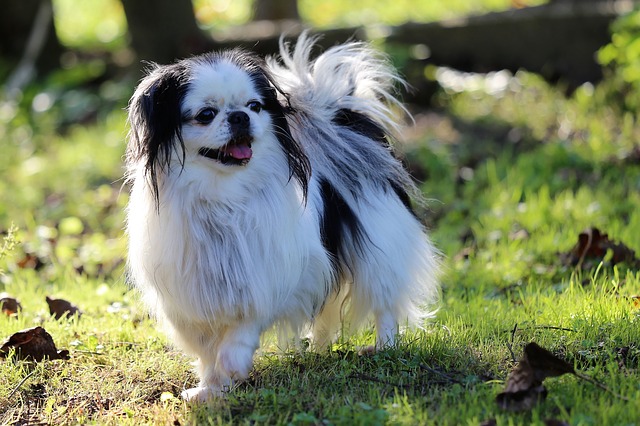
Japanese Chin 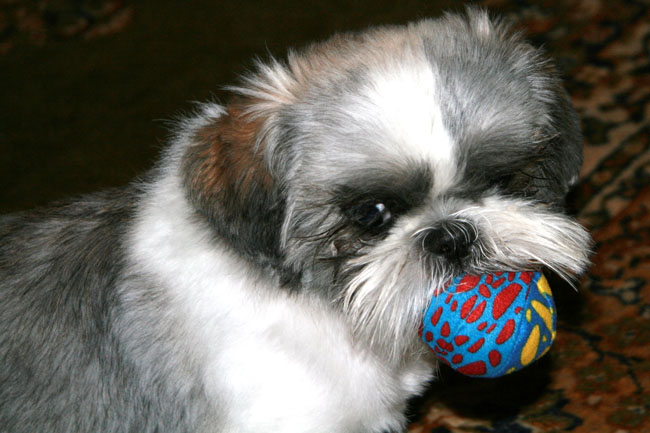
Shih Tzu
- Chinese Crested: Given an option between going for a walk and sprawling on the bed, Chinese Cresteds pick the bed every time. They’re one of the best dog breeds for apartments. You won’t have to put up with much shedding, considering they’re one of the hairless breeds, and they’re only moderate in the barking department. However, they’re wary of strangers, so make sure you get them socialized from an early age.
- Greyhound: A racing dog? In an apartment? Greyhounds may have a reputation as runners, but if you give them a couch or comfy bed, they’ll curl up and sleep the day away. And you’d be amazed at how SMALL these large dogs can curl up. (Ours fits onto a cat bed when she wants to) If you provide two walks a day – maybe a single zoomie – they’re good to go. Just be warned: they SHED for a short-haired dog.
- Japanese Chin: With long, silky coats, Japanese Chins prefer to AVOID the outdoors. If you can keep them inside, they’ll stay happy. And they get along with everyone they encounter. You DO need to make sure you care for that hair, but you won’t see more shedding than usual. They DO like to climb, though. You’ll need to sweep your shelves for potential hazards – or things you don’t want to be knocked over.
- Shih Tzu: Who doesn’t love a Shih Tzu? With adaptability, these adorable little pups work in any environment. And they’re happy to snuggle with you on the couch. You won’t need to engage in much more than the average walk to meet their activity needs. This puts them in the prime position to meet new people, too – something they love. With only moderate shedding and a low propensity for barking, they’re the perfect dog breed for apartments.
Best Dog Breeds for Apartments: Moderate Exercise Needs
You like getting out and meeting people. Or perhaps that morning jog is your equivalent to a cup of coffee. Some extra time spent with your dog getting exercise doesn’t phase you. Then these are the best dog breeds for apartments that’ll suit you. They’ll still spend time with you when you want to unwind, but no one’s going to call them lazy. If you DON’T meet their energy demands, you could find yourself seeing some destructive behaviors. (Or your neighbors will let you know they heard extra barking)
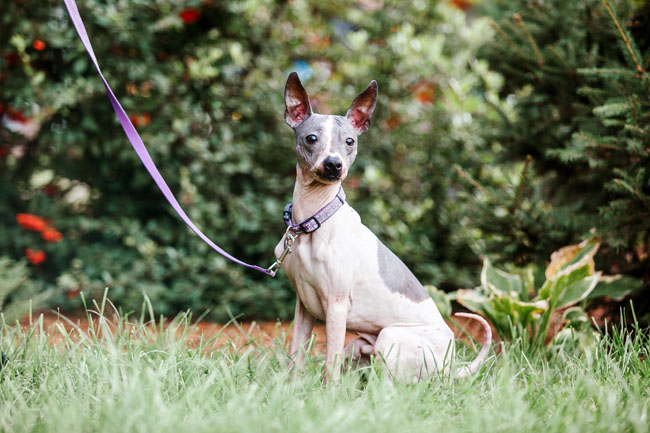
American Hairless Terrier 
Cavalier King Charles Spaniel 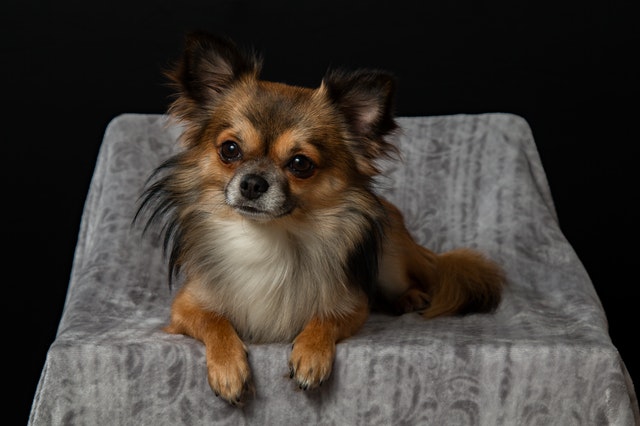
Chihuahua 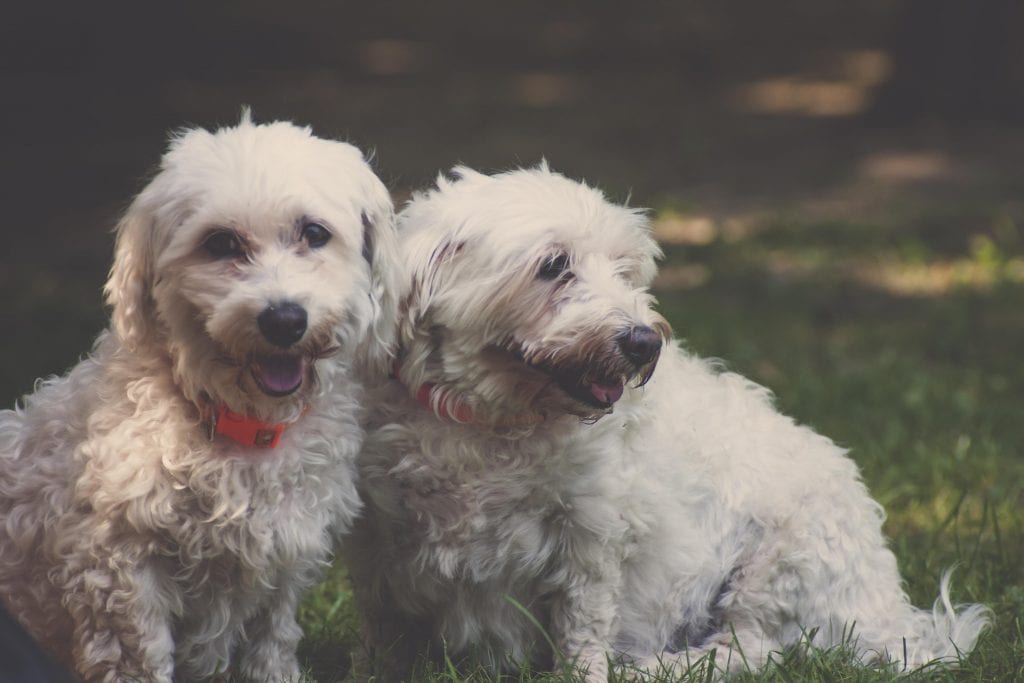
Coton de Tulear 
French Bulldog 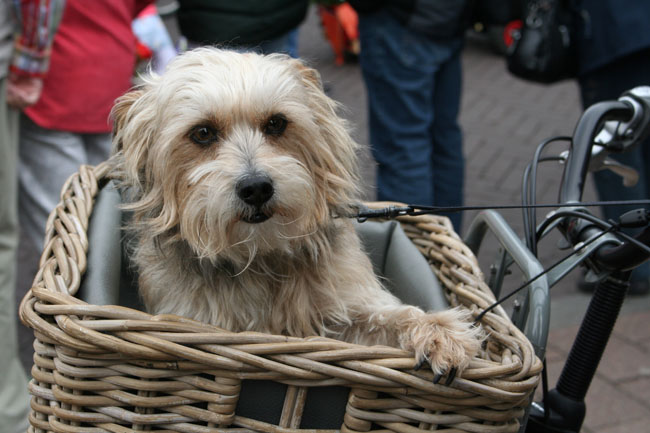
Havanese 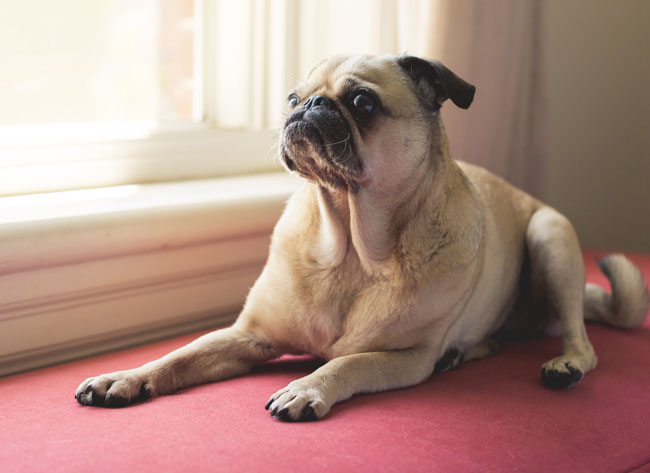
Pug
- American Hairless Terrier: American Hairless Terriers don’t need the constant activity of many other terrier breeds. Twice-a-day walks with some time to play inside works without a problem. And since they’re portable, you won’t need to clear the room to toss around a toy. The breed comes “naked” or with a soft coat, and neither sheds very much, making grooming a breeze. And as long as they receive socialization, you won’t have to cope with barking.
- Cavalier King Charles Spaniel: Cavis LOVE people. Whether going out for a jog, taking a hike, or walking along the shore, they greet everyone with enthusiastic tail wags. And when the day’s over? They’ll flop onto the couch with you. You WILL need to work with them on housetraining, as they have a stubborn streak where that’s concerned.
- Chihuahua: With some of the tiniest feet in the canine world, Chihuahuas certainly qualify as one of the best dog breeds for apartments! You still need to keep up with their exercise needs, though. These little pups need an average of 30 minutes a day of activity to remain fit, trim, and OUT of trouble. You’ll also want to minimize the time they stay on their own as they tend to bark more than the average dog.
- Coton de Tulear: The first job of the Coton is companionship. Whether that means heading out to tour the town, jet-setting across the country, or playing in the house, they’re happy if they’re with you. They have a soft, fluffy coat that WON’T shed much, and they don’t really bark. However, they DO get separation anxiety. If you’re away from home a lot, this may not be the dog breed for apartments that works best for you.
- French Bulldog: Frenchies are masters at dividing their time between play and rest. And you’ll need to keep up with their activity needs, so they don’t put on too much weight. But when it comes to the city? Frenchies thrive! They ADORE people, and they can make friends with anyone. And since they only bark with good reason, your neighbors won’t mind sharing wall space with you.
- Havanese: Despite the nickname of “Velcro dogs,” Havanese do exceptionally well in apartments. True, they’ll stay close to your side as you take them on walks and head to the park, but they also love meeting new people. And they don’t mind novelty! New sights and sounds interest them. And since they don’t shed or bark very much, they make excellent dog breeds for apartments.
- Pug: Given the chance, Pugs might try to scoot themselves to the low exercise category. However, to stay healthy, they need to get more than a single walk each day. And who doesn’t love a smushed Pug face? These lovable clowns draw everyone into their circle of friends. In the shedding and barking department, they rank minimal, too.
Best Dog Breeds for Apartments: High Exercise Needs
If you’re interested in one of these dog breeds for apartments, you’ll need some extra time on your hands. These pups have HIGH energy. And while (mostly) on the small side, a couple of tosses of the ball won’t do it. If you DON’T meet their exercise demands, you could come home and find your apartment in shambles. Without a proper outlet for the buzzing in their paws, these dogs will set out to find SOMETHING to do. If you can’t keep your canine entertained on your own, consider finding a pet-sitting service you trust. Or maybe even trade services with one of your dog-loving neighbors.
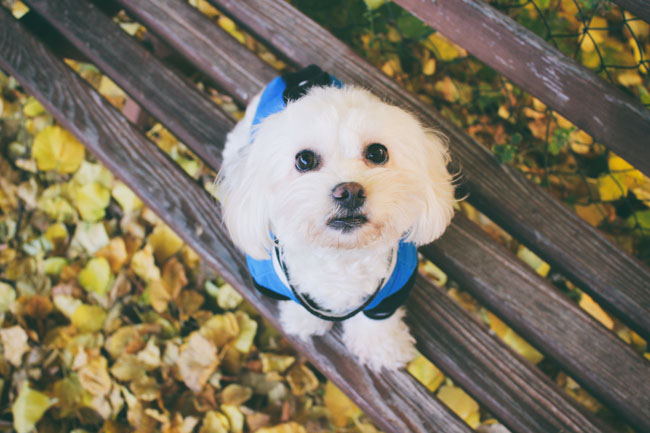
Bichon Frise 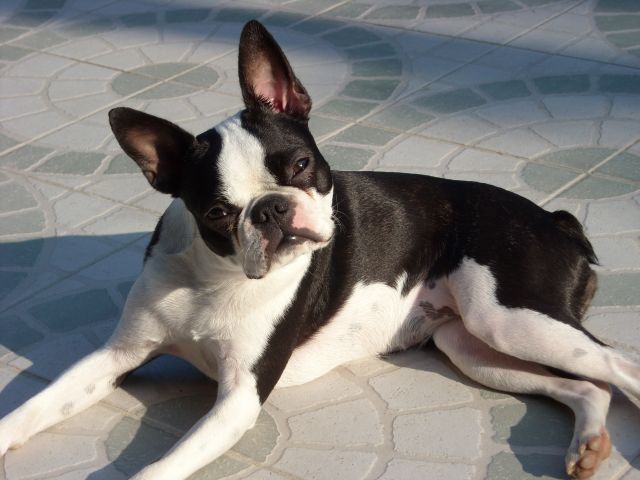
Boston Terrier 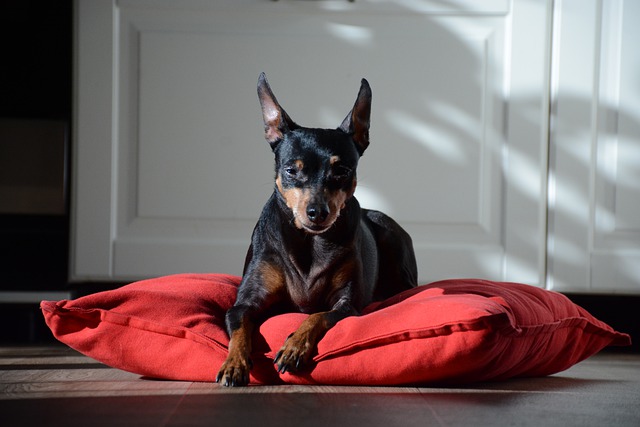
Miniature Pinscher 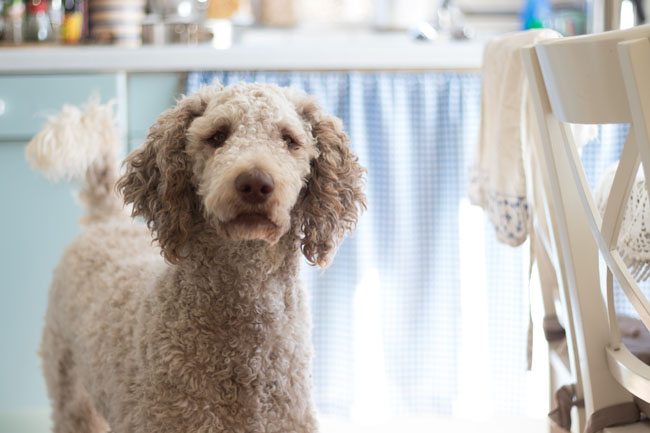
Poodle
- Bichon Frise: Bichons need to be around SOMEONE the majority of the day. This manifests into tightly-wound energy. And when they don’t get walks, games, and times with you? You end up with a dog with separation anxiety. You’ll either need to tuck your pup into a dog carrier bag and bring them everywhere you go or tire them out with plenty of exercise.
- Boston Terrier: Fitting nicely into the average apartment, Bostons charm everyone with their faces and antics. But they ARE terriers, and you need to channel that natural energy into productive activity. Mind the outdoor temperatures, though, as these pups can easily overheat if you’re not careful. You’ll also need to cope with some moderate barking (comes with the terrier background).
- Miniature Pinscher: Min Pins vibrate with the need to go somewhere and do something – even on those little legs. A couple of walks a day won’t do it. And since they’re known as escape artists, you’ll WANT to tucker them out (or face the alternative). Otherwise, though, they don’t bark much, and you won’t see much hair hitting the floor. It makes them an ideal dog breed for apartments.
- Poodle: With three sizes to choose from, Poodles work for any apartment. However, they’re SMART dogs, and you won’t convince them the weather’s too crummy to venture outside. When it’s time for them to play, they’ll let you know – in no uncertain times. If you meet those demands, though, Poodles are delights. They don’t shed, and you won’t hear them making a peep (except to tell you to grab the leash).
High Rise Living
Plenty of people love the city. The sound of cars rushing by on the street? That’s their lullaby. And since there are plenty of awesome dog breeds for apartments, you don’t need to give up on your dream of sharing a life with a canine. You just need to take a careful look at your lifestyle. Once you know what will work with your schedule – and your neighbors – you can start to look for that furry friend.
And, remember, an apartment doesn’t mean you have to bring home a tiny pup!




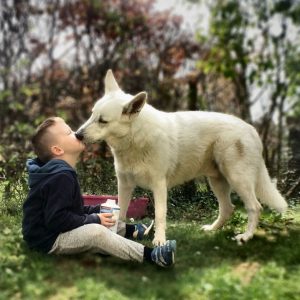


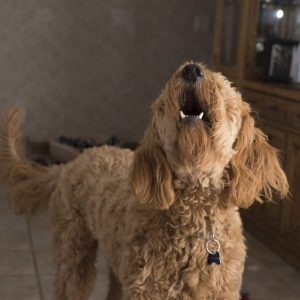
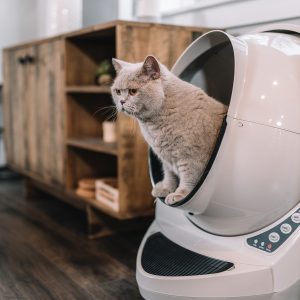




No comment yet, add your voice below!